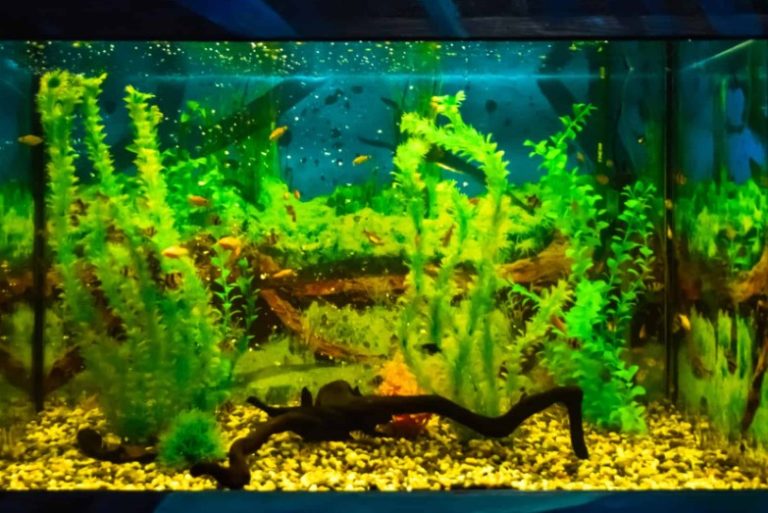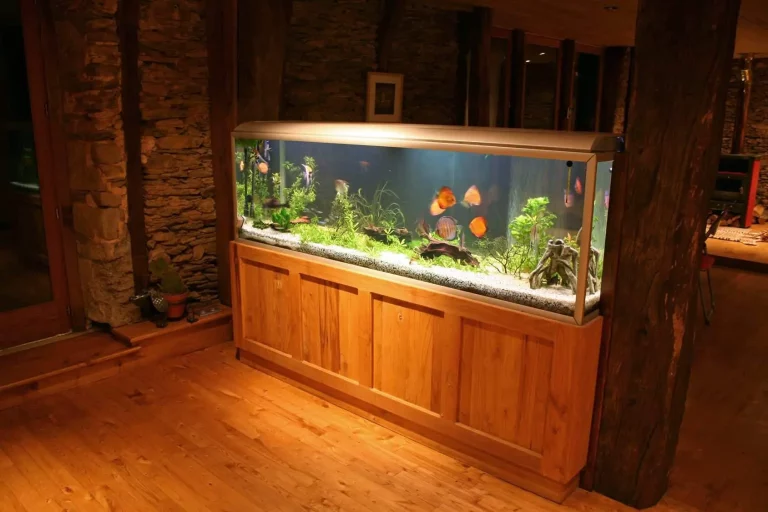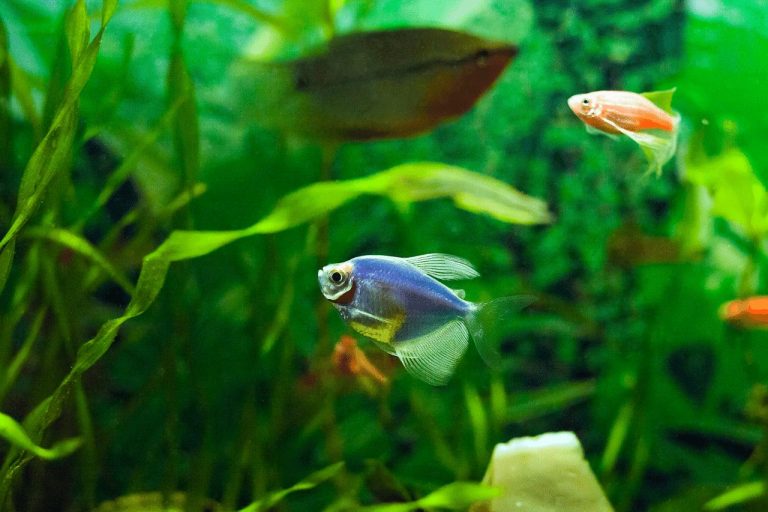The Truth About Why Aquarium Glass Breaks: Revealed!
Aquarium glass breaks due to excessive pressure or impact. The glass can no longer withstand the force, causing it to shatter.
Aquariums are a great way to bring marine life into your home or office. However, it is important to understand the reasons why aquarium glass may break to prevent fish loss and costly damages. Aquarium glass can break due to various factors, including improper handling, water temperature changes, cracks in the glass, manufacturing defects, and the use of incorrect sizes or types of glass.
In this article, we will explore the common causes of aquarium glass breakage and provide tips on how to prevent it from happening to your aquarium. By understanding these factors, you can ensure the longevity of your aquarium and the safety of your aquatic pets.

The Anatomy Of Aquarium Glass: What You Need To Know
Aquariums are an excellent way to add some natural beauty to any space, but they’re also somewhat of a science experiment. To keep your aquatic friends safe and sound, you need to know how to maintain their environment properly. One factor that’s important to understand is how aquarium glass can break, and what factors contribute to it.
We’ll dive into the anatomy of aquarium glass, including the different types available, why thickness matters, and the manufacturing process behind it all.
The Different Types Of Aquarium Glass
There are four types of aquarium glass to choose from, each with its pros and cons.
- Plate glass: The most popular choice among aquarium owners. It’s sturdy, affordable, and easy to find. However, it’s not as durable as other types, making it unsuitable for larger tanks.
- Tempered glass: More robust than plate glass but is also more expensive. It can withstand high pressure and is less prone to breakage. If it does shatter, it breaks into small, dull pieces, minimizing danger to animals.
- Acrylic plastic: Alternative to glass. Lightweight and shatterproof making it ideal for large aquariums. However, it’s more prone to scratching than glass and requires special care when cleaning.
- Low iron glass – high-quality option that eliminates the greenish tinge that regular plate glass and can distort the color of inhabitants can have.
The Thickness And Size Matters
Aquarium glass thickness and size are major factors to consider. The thickness of the glass needed will depend on the size of the aquarium and water pressure.
- The thickness required for the side panels will be less than that of the base and front panels due to pressure distribution.
- The general rule is to choose glass that’s at least 1 inch thick for the larger tanks, especially those above 300 gallons.
- A tank with a height of 30 inches or more should use 1/2 inch-thick glass instead of 3/8 inch.
- Smaller tanks under thirty gallons can typically use glass between 1/8 inch (3mm) to 1/4 inch (6mm) thick.
The Manufacturing Process Of Aquarium Glass
The manufacturing process of aquarium glass is fascinating and strictly monitored to ensure quality. The process includes a series of steps as follows:
- Melting glass in a furnace: The raw materials such as sand and lime are mixed and melted at high temperatures of approximately 1500℃ or higher to form liquid glass.
- Annealing and cooling: After glass making process, the liquid glass is cooled down in an annealing oven and then conditioned slowly and cooled to ensure minimal internal stress.
- Cutting and shaping: The glass is then cut and shaped with the help of a cnc machine or water jet cutter.
- Polishing and edging: The glass edges are ground and polished to a shiny, smooth finish, and the surfaces of the glass are cleaned before shipping.
Knowing the differences between types of aquarium glass, the appropriate thickness for the size of your tank, and the complex manufacturing process involved in creating it are crucial for keeping your aquarium safe and breakage-free. With the right level of care and understanding, you can enjoy the beauty of these underwater worlds without worrying about glass failure.
The Truth About Why Aquarium Glass Breaks: Revealed!
If you are a fish owner, there is nothing more devastating than coming home to find your beloved aquatic pets floating among the broken glass of their tank. Aquarium glass breakage is a common occurrence that can happen to any fish owner, no matter how experienced.
Understanding its causes is crucial in avoiding future mishaps.
Understanding The Common Causes Of Aquarium Glass Breakage
Aquarium glass breakage can happen for many reasons, including but not limited to:
- Poor quality glass: Low-quality aquarium glass is extremely susceptible to breaking. When purchasing an aquarium, don’t skimp on its quality or you may find yourself with a broken tank sooner rather than later.
- Uneven weight distribution: A tank that is not evenly distributed can easily crack and result in a flooded room. Ensure the tank is mounted on an adequate stand or surface that accommodates the aquarium’s weight.
- Tempered glass: Avoid using a tempered glass aquarium as it is more brittle and prone to breakage than regular glass.
- Temperature changes: Drastic and rapid temperature changes, both hot and cold, can cause the glass to crack. Proper water temperature regulation is essential for the health of your fish as well as ensuring the longevity of your aquarium.
What Happens When An Aquarium Glass Breaks?
When an aquarium glass breaks, several things occur:
- Glass shards scatter: Broken glass shards can scatter all over the surrounding area, posing a risk to humans and pets alike. It is important to clean up broken glass quickly to avoid any further damage or injury.
- Water everywhere: A cracked or shattered aquarium will quickly flood its area, wreaking havoc on your home, electrical systems or furniture. If not tackled quickly, the water could cause irreversible water damage, mold growth, or even structural problems.
- Dead fish: If the aquarium’s glass had broken when the owner was absent, the poor fish would have been left to die a slow and painful death.
How To Avoid Aquarium Glass Breakage
Prevention is always better than cure when it comes to aquarium glass breakage. Here are some practical tips you can follow to avoid aquarium glass breakage:
- Use high-quality glass
- Select a flat surface that can support the aquarium’s weight
- Do not place the aquarium near direct sunlight
- Do not place the aquarium near a heat source
- Regulate water temperature with proper equipment
- Inspect your aquarium regularly for cracks or any visible damage
- Be careful when cleaning or moving the aquarium.
Remember, an ounce of prevention is worth a pound of cure. With the right knowledge and care, you can make an aquarium that is both beautiful and safe for your fish.
The Aftermath Of Aquarium Glass Breakage: What To Do
Aquarium glass breakage can lead to a disastrous situation, leaving pet owners overwhelmed and stressed. A shattered aquarium can cause a huge mess and also put the safety of the aquarium inhabitants in jeopardy. Therefore, it’s essential to know what to do in such a situation.
In this blog post, we will discuss what to do after aquarium glass breaks, and how to salvage your aquarium.
Responding To A Broken Aquarium Glass
The breaking of an aquarium glass is not only scary and dangerous but also needs safe and immediate action. Here are the key points to remember when responding to broken aquarium glass:
- Don’t panic and try to stay calm and composed during the situation.
- Turn off all electrical equipment, such as pumps and filters, immediately.
- Unplug the aquarium and remove all its electrical parts to prevent electrical shock or fire.
- Cover the aquarium using a towel or pillowcase to stop the glass from spreading, and to prevent fish from getting injured or escaping.
- Place the fish in a separate container, putting them with aquarium water and an aerator to keep them well oxygenated.
Salvaging Your Aquarium After A Breakage
After handling the immediate situation, it’s important to be prepared to salvage the aquarium successfully. Here are the key points to follow when salvaging your aquarium post-breakage:
- Dispose of all the broken glass properly and sanitize the area by cleaning up each glass piece.
- Inspect the aquarium carefully for cracks or other damage. If there is only one crack and you can replace it yourself, try using a suitable silicone-based aquarium sealant to fix it. However, if the damage is significant, it’s better to purchase a new one to avoid the risk again.
- Wash the aquarium thoroughly, making sure to get rid of any shards of glass or gravel that can harm your fish.
- Reintroduce water and other aquarium elements such as plants, rocks, and substrate slowly and carefully.
- Test the water chemistry and temperature to make sure you have created a healthy environment for your fish.
Responding to a broken aquarium glass is a challenging situation. Nevertheless, a prompt response and careful salvage work can limit the negative impact and help you avoid this problem in the future. We hope this post has given you valuable knowledge that helps you deal with a broken aquarium glass competently and effectively.
Frequently Asked Questions For Why Aquarium Glass Breaks
Why Do Aquarium Glass Breaks?
Aquarium glass breaks due to temperature fluctuations, wrong installation, and defects in glass.
Can Glass Thickness Cause An Aquarium To Break?
Yes, glass thickness matters because it determines the aquarium’s weight and water pressure it can withstand.
What Is The Recommended Thickness Of Aquarium Glass?
The thickness of aquarium glass depends on its size. For a small aquarium, 3-6mm is fine. For a large aquarium, it should be 12-19mm.
How To Prevent Aquarium Glass From Breaking?
To prevent aquarium glass from breaking, ensure that it is placed on a sturdy stand, avoid temperature fluctuations, and make sure it is installed properly.
Does The Type Of Glass Matter For An Aquarium?
Yes, the type of glass matters for an aquarium. Tempered glass is best for aquariums as it’s stronger than regular glass and can withstand more pressure.
Can Scratches Cause An Aquarium To Break?
Scratches alone cannot cause an aquarium to break, but they weaken the glass, making it more prone to breaking under pressure.
Conclusion
To avoid the heartbreak of a broken aquarium, it’s essential to understand why aquarium glass breaks. Several factors contribute to the eventual breaking of aquarium glass, from inadequate quality of the glass to poor maintenance of the aquarium itself. It’s noteworthy that the size, shape, and positioning of the aquarium also contribute actively to the possibility of the aquarium glass breaking.
Therefore, an aquarist can only ensure the longevity of their aquarium by considering these various factors and taking necessary precautions. Cleaning the aquarium regularly, positioning it in a safe place, and using high-quality glass are all excellent ways to prevent the breaking of aquarium glass.
Caring for the aquarium is an essential aspect of any aquarist, as this helps to prevent the heartbreak and loss of marine life that comes with a broken aquarium.






